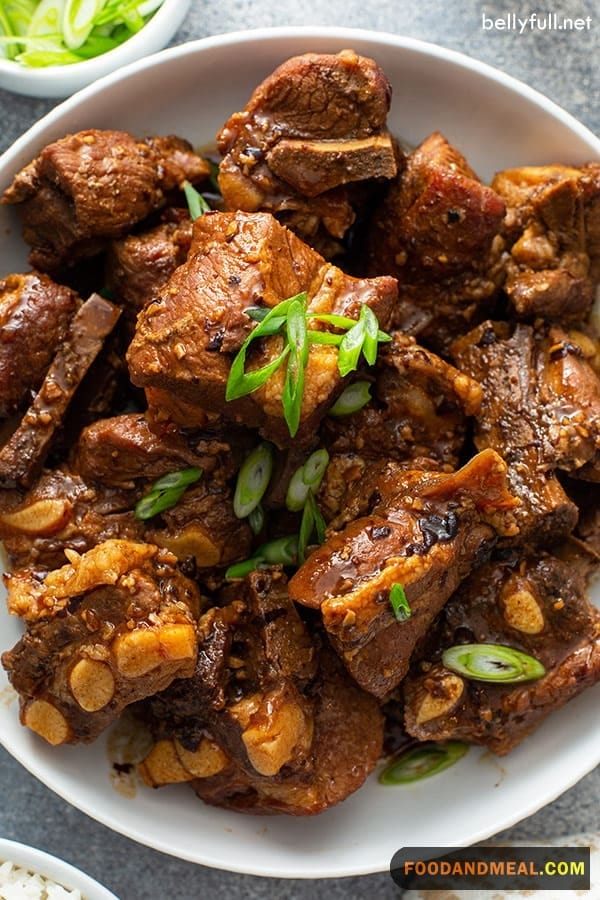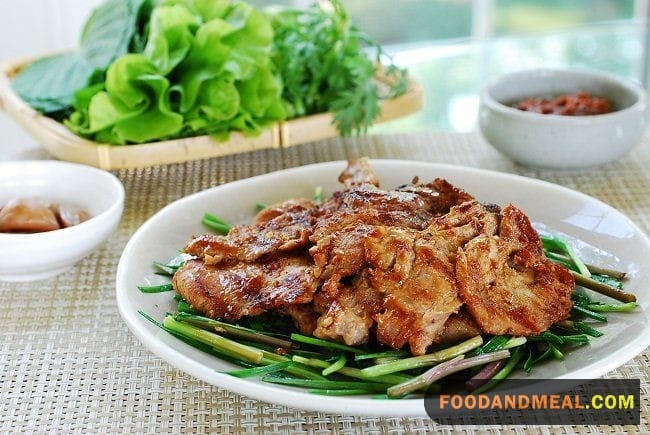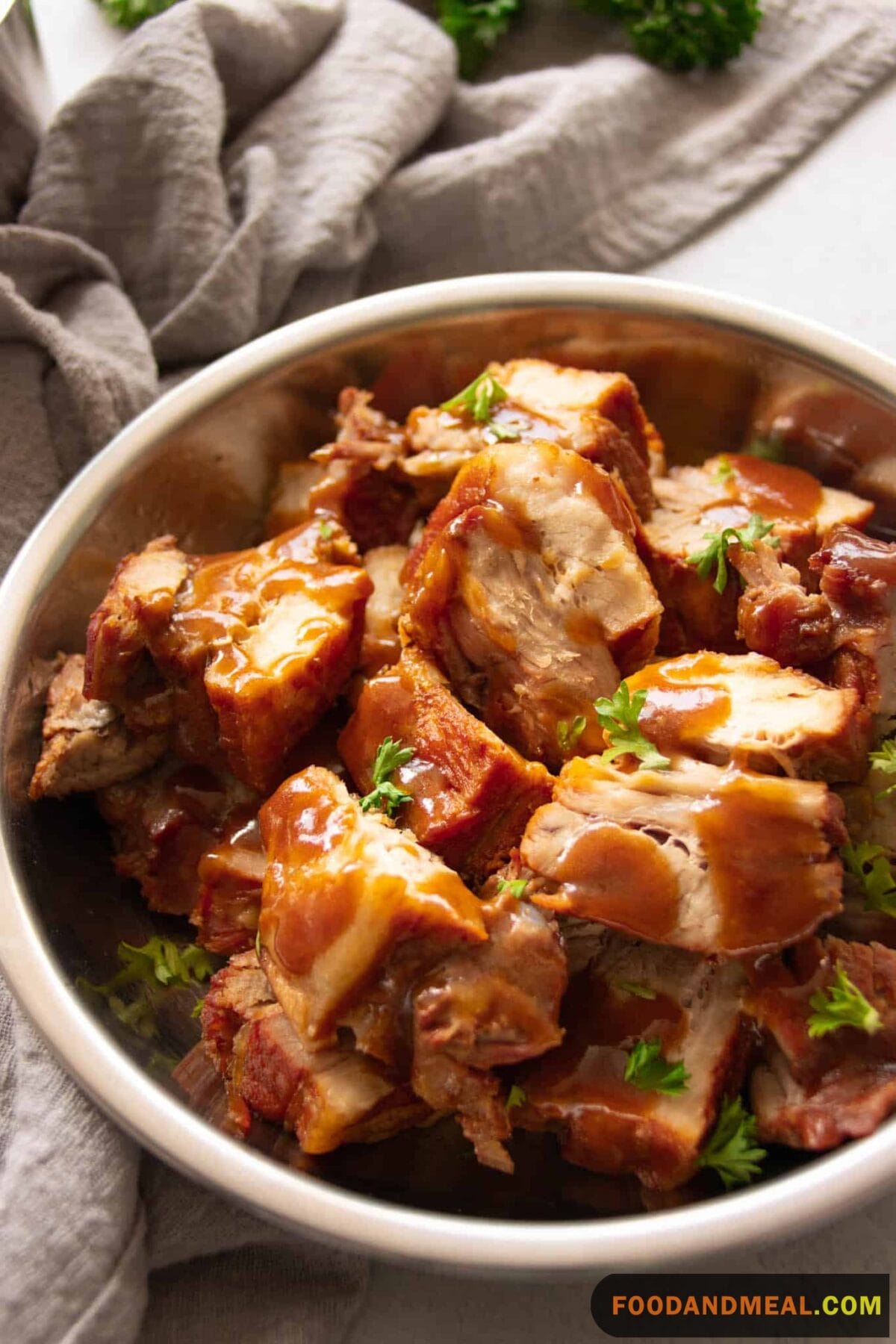As a busy working mom, finding time to prepare wholesome home-cooked meals can feel next to impossible some days. But ever since my colleague Rina introduced me to Food and Meal‘s melt-in-your-mouth Soybean Paste Pork, I’ve found my inspiration to get back into the kitchen.
As someone who loves exploring the bright, complex flavors of different Asian cuisines, I was instantly intrigued when she described the recipe. And the minimal prep work sealed the deal. With my hectic schedule juggling my marketing job and wrangling my two energetic kids, convenience is critical.
The brilliance of this Soybean Paste Pork is that the salty, umami-rich soybean paste tenderizes the pork shoulder as it slowly braises, infusing it with mouthwatering flavor. No tedious marinating or hours spent tending a braise on the stove. Thanks to Food and Meal’s simple instructions, it’s an easy weeknight win I can make in my Instant Pot after work.
But what truly excites me is how versatile this recipe is once I nail down the classic version. I can already envision mixing in aromatic spices like garlic and ginger or adding crunchy veggies like snap peas or bok choy. It’s the ultimate blank canvas for kitchen creativity.

Soybean Paste Pork Recipe

SOYBEAN PASTE PORK
Equipment
Ingredients
- 1 pound pork tenderloin
- 1 tablespoon mirin
- 1 tablespoon soy sauce or gluten-free soy sauce
- 1 tablespoon doenjang or gluten-free doenjang
- 1 tablespoon minced garlic
- 2 tablespoons sake
- 1 tablespoon sugar
- 1 tablespoon toasted sesame oil
- 1 teaspoon ground sesame seeds
- Pinch of freshly ground black pepper
Instructions
- If there is a silvery membrane running down the side of the pork tenderloin, trim it. Slice the pork thinly.
- In a medium bowl, mix together the mirin, soy sauce, doenjang, garlic, sake, sugar, sesame oil, sesame seeds, and pepper until well-combined.
- Add the pork to the bowl and toss with the marinade. Marinate for 30 minutes.
- Stir-fry or grill the pork over medium-high heat until cooked through, 6 to 8 minutes.
- Serve hot.
Video
Notes
Nutrition
© Food And Meal
This website provides approximate nutrition information for convenience and as a courtesy only. Nutrition data is gathered primarily from the Spoonacular Database, whenever available, or otherwise other online calculators.
Alternative Method: Baked Soybean Paste Pork in an Oven
Elevate your culinary experience by preheating the oven to 350°F (175°C). Craft a luscious marinade in a mixing bowl, combining Korean soybean paste, minced garlic, honey, sesame oil, soy sauce, mirin, and Gochugaru.
Allow the thinly sliced pork to luxuriate in this flavorful blend, refrigerating for at least 30 minutes. Grease a baking dish to ensure a delightful release.
Layer the marinated pork slices in the dish, accentuating them with thinly sliced onions. Bake for 40-45 minutes until the pork achieves full cookery and a tempting caramelized appearance.
Upon completion, adorn the Baked Soybean Paste Pork with chopped scallions and a sprinkle of sesame seeds. Serve this delectable dish hot, accompanied by steamed rice and your favorite Korean side dishes. Immerse yourself in the rich and savory flavors of this culinary delight.
Cooking Tips

or the first time, I quickly realized a few handy tips can make all the difference between good and great results. While the instructions themselves are clear and simple to follow, I discovered some small tweaks along the way that took this meal to the next level for my family.
First, I highly recommend using high-quality, freshly ground gochugaru (Korean red pepper flakes) if you can find it. The complex fruitiness of the chili powder enhanced the pork’s rich umami flavors beautifully. I also suggest adding minced garlic and ginger during the last 30 minutes of cooking to give a nice kick of aromatic spice.
Additionally, braising the pork low and slow is key for ultimate tenderness – don’t be tempted to rush things! And letting the meat rest afterwards allows those luscious juices to be reabsorbed. Finally, serve it over a bed of fluffy white rice or noodles to soak up the ambrosial sauce.
Serving Suggestions

The rich, spicy Curry Yakisoba noodles would contrast beautifully with the salty-sweet pork, the heat and acidity cutting through the unctuous meat. I envision mixing the curry sauce right into the braising liquid to infuse the noodles with extra depth.
I also think the bright flavors of the Kohlrabi Salad would balance the heartiness of the pork. The crisp sweetness of the thinly sliced kohlrabi and tart lemon dressing would cut through the rich meat.
Additionally, the Steak Teriyaki‘s sweet soy glaze and tender beef would echo the Soybean Paste Pork‘s umami richness. They would make a perfect meat-on-meat match.
Finally, a steaming bowl of Tonkotsu Ramen would round out the meal wonderfully. The thick, creamy pork bone broth would complement the fork-tender Soybean Paste Pork. I can already imagine the rich flavors blending together in slurp-worthy harmony.
FAQs of Soybean Paste Pork

- What can I use soybean paste for? Soybean paste adds depth and umami to various dishes, commonly used in Korean cuisine for soups, stews, marinades, and dipping sauces.
- What is Korean soybean paste for meat? In Korean cuisine, soybean paste is often used as a marinade for meat, providing a savory and flavorful profile to enhance the taste of pork, beef, or chicken.
- What is soybean paste good for? Soybean paste is versatile, bringing rich, fermented flavors to dishes. It’s excellent for marinating meat, creating savory sauces, and adding complexity to soups and stews.
- What is maekjeok in Korean? “Maekjeok” refers to skewered and grilled meat, often enjoyed as a popular street food in Korea.
- Can I store leftovers of Soybean Paste Pork?Absolutely! Store any remaining Soybean Paste Pork in an airtight container in the refrigerator for up to 3 days. Reheat gently in the microwave or on the stovetop for best results.
- Can I use a different type of pork for this dish? Certainly. While thinly sliced pork belly or shoulder is traditional, you can experiment with other cuts like pork loin. Just be mindful of the cooking time to avoid overcooking leaner cuts.
- Is Soybean Paste Pork very spicy? The spiciness level can be adjusted based on your preference. If you’re sensitive to heat, use less Gochugaru (Korean red pepper flakes) in the marinade. Taste and customize it to suit your palate.
- Can I make this dish vegetarian or vegan? Absolutely! You can substitute the pork with tofu or mushrooms for a vegetarian or vegan version. The soybean paste marinade pairs wonderfully with these alternatives.
- What beverage pairs well with Soybean Paste Pork? For an authentic experience, pair this dish with a traditional Korean rice wine called “makgeolli” or a light lager. If you prefer non-alcoholic options, go for iced barley tea or a refreshing cucumber cooler.
Conclusion
As I wrap up this blog post extolling the easy deliciousness of Food and Meal’s melt-in-your-mouth Soybean Paste Pork, I’m feeling truly grateful for recipes like this. As a busy working mom, having convenient, flavorful dishes I can execute without stress has brought more joy back to my family’s hectic weeknights.
I’m thrilled to have this versatile recipe in regular rotation now, with so many possibilities for customization using aromatic spices, crunchy veggies, creamy sides and more. Food and Meal has opened up a world of lightly-spiced Korean soul food I can recreate at home.
So if you’re also seeking to infuse a little more comfort into your crazy schedule through home cooking, I highly recommend exploring Food and Meal’s repertoire of recipes. With their simple instructions and endlessly adaptable dishes like this rich, meltingly tender Soybean Paste Pork, wholesome homemade meals are once again achievable for me.
Hi! I'm Nazia of ‘Nazia Cooks’, a self-taught baker and cook residing in Chennai. Rooted in the rich South Indian culinary landscape, my palate has expanded to embrace global flavors. I revel in crafting fusion dishes, melding traditions to birth unique tastes.



